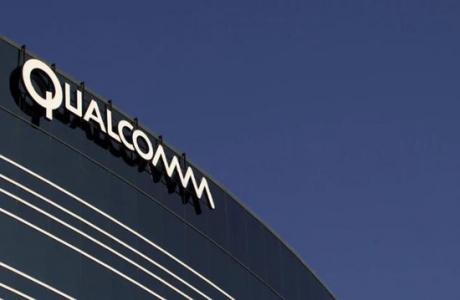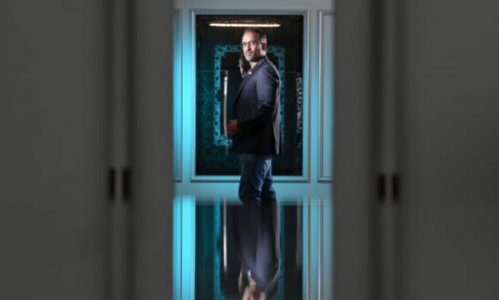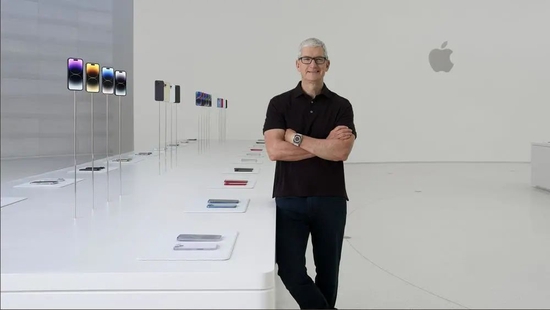your current location is:Home > Finance > depthHomedepth
Intel to blame?
The past week is destined to be unforgettable for Intel. Its market value was first surpassed by AMD, and was rated as "sell" by many overseas investment institutions, but Intel's crit was far more than that.
In the early morning of August 3, Beijing time, AMD released its second-quarter results as of June 25. Under non-GAAP standards, the revenue for the quarter was US$6.55 billion (about 44.25 billion yuan), A year-on-year increase of 70%; net profit was US$1.707 billion (approximately RMB 11.532 billion), a year-on-year increase of 119%.
This earnings report is a shame for Intel, because just a few days ago, the company handed over its worst earnings report since 1999: revenue for the quarter was $15.3 billion, down 17% year-on-year, far below market expectations. of $17.66 billion. Even worse, Intel's net loss reached an unprecedented $500 million, compared with a profit of $5.1 billion in the same period last year.
Intel's main financial indicators in the second quarter
In a post-earnings conference call, Intel CEO Pat Gelsinger acknowledged Intel's execution problems in areas such as product design, while blaming headwinds in macroeconomic activity and declining global PC sales.
But even the people who eat melons can see the problem: the impact of the macro background is not only for Intel, why can AMD achieve a contrarian rise?
In fact, if Gelsigner blamed Intel's "transition pains" for the problems, it might be easier to accept. After all, it is difficult for Intel today to use the single label of "PC chip manufacturer" to summarize its business scope. Since the establishment of the "data-centric" transformation goal in 2017, Intel has begun to strive to become its own in the PC era. Say goodbye.
Up to now, Intel has six divisions: Data Center and Artificial Intelligence Division (DCAI), Client Computing Division (CCG), Accelerated Computing Systems and Graphics Division (AXG), Network and Edge Division (NEX) ), Intel Foundry Services (IFS), and the Mobileye Division.
From the financial report, some emerging business units are facing serious losses. For example, AXG’s total revenue in the second quarter was US$186 million, but its operating loss was as high as US$507 million. The loss was significantly higher than the US$168 million in the same period last year.
In an interview with CNBC, Gelsigner said that Intel's comeback strategy is comparable to "climbing Mount Kilimanjaro," but it seems that Intel has more than one mountain to climb.
"Legend Builder" is powerless
"Den, Deng Deng Deng Deng" an advertising audio of less than 2 seconds has successfully carved an indelible imprint on the hearts of global electronic consumers, but even with such influence, the industry status of this chip giant has been severely affected in recent years. challenge:
On the one hand, AMD relied on the Zen architecture to emerge, and in the Zen3 era, relying on TSMC's advanced manufacturing process, AMD chips are completely ahead of Intel's similar products in terms of power consumption and core performance. On the other hand, Apple, which holds high the banner of the ARM architecture, relies on the subversive performance of its self-developed M1 chip to tell the world that the X86 architecture is not the only choice for CPU.
Under the dual pressure of old rivals and new battlefields, Intel also began to seek a way out. Please return Pat Gelsinger, the first CTO in Intel's history, to take charge of the company, hoping to reshape the glory of the Core 2 era 15 years ago.
The "Legend Builder" was the designer of the original 80486 processor and led the development of 14 different microprocessor programs during his tenure at Intel. As a technocrat, Gelsinger has a strong appeal in the industry, and he quickly regrouped after taking office.
Glenn Hinton, the former chief architect of Intel's first-generation Core CPU, returned after three years of retirement to be responsible for the design and development of high-performance CPUs; a legend in the field of SDN, Stanford University professor Nick McKeown joined Intel to be responsible for edge computing, and even AMD GPUs. Chief architect Rohit Verma was also brought back under Gelsinger.
After the team was built, Gelsinger started a drastic product line reorganization. At the investor conference in February this year, Gelsinger presented the industry with an extremely ambitious blueprint.
Specifically, DCAI (Data Center and Artificial Intelligence Division) will be divided into two product lines in the future: two products based on performance core (P-core) and energy efficiency core (E-core). Complex cloud and data center applications; energy efficiency cores are energy efficiency optimized for cloud-oriented high-density, ultra-energy-efficient computing.
Under this product plan, Emerald Rapids (Xeon processor) is planned to be available in 2023, which will further enhance the advantages of existing platforms in terms of memory and security while improving performance; the Sierra based on Intel 3 process technology will follow. Forest, as well as Granite Rapids, are scheduled to come out in 2024.
The next-generation product line of another major traditional business, CCG (Intel Client Computing Division), includes Raptor Lake (13th-generation Core) and subsequent Meteor Lake and Arrow Lake.
Image source: Intel
It is worth mentioning that Arrow Lake will be the first product to use the Intel 20A process, and it will be a leap forward if it can be launched in the first half of 2024 as planned.
However, at the implementation level, the above-mentioned products generally have the problem of delay. Take Sapphire Rapids, for example, this server processor didn't show up at the investor conference because it was Emerald Rapids' previous-generation chip, originally planned for release in 2021, but after three delays, the release has now been pushed back to 2023 .
Compared with the delay in the product release cycle, the bigger problem Intel faces is the shaking of the basic disk.
Intel’s financial report shows that in the second quarter of this year, Intel’s CCG (Intel Client Computing Division) revenue was US$7.665 billion, a 25% decrease from US$10.253 billion in the same period last year; operating profit was US$1.085 billion, compared with US$4.029 billion in the same period last year. .
Among them, the desktop business revenue was $2.289 billion, compared with $2.792 billion in the same period last year; the notebook business revenue was $4.751 billion, compared with $6.734 billion in the same period last year.
An indisputable fact is that the shrinking of PC market demand in the first half of this year is very serious. According to IDC statistics, global traditional PC shipments fell by 15.3% year-on-year in the second quarter, totaling 71.3 million units.
But this has not affected the progress of AMD's expansion in the slightest. The company's financial report shows that in the second quarter of this year, revenue from the customer division, which includes desktop and notebook PC processors and chipsets, was $2.152 billion, an increase of 25% year-on-year. %, operating profit of 676 million US dollars, an increase of 26%.
Another data more intuitively reflects the rise and fall of the two companies. According to data released by Mercury Research, in the fourth quarter of 2021, Intel's market share in the X86 CPU field was 72.3%, down 7 percentage points year-on-year. Correspondingly, AMD's market share increased by 7 percentage points year-on-year, and its market share further expanded to 27.7%. .
It is worth mentioning that in the past 4 years, AMD CPU market share has achieved 13 consecutive quarters of growth. In contrast, Intel's client computing division has recorded a year-on-year growth of 9% in the fourth quarter of 2021 only in the past four quarters.
On the other hand, Intel's DCIA (Data Center and Artificial Intelligence Division) is also not optimistic. The financial report shows that in the second quarter of 2022, Intel’s DCAI business revenue was US$4.6 billion, a year-on-year decline of 16%, far lower than Wall Street’s consensus of US$6.19 billion; operating profit was only US$200 million, compared with US$2.1 billion in the same period last year. down 90%.
Thanks to the excellent market performance of Milan EPYC (server CPU), AMD's data center division achieved revenue of $1.486 billion in the second quarter of this year, an increase of 83% year-on-year, and an operating profit of $472 million, a year-on-year increase of 131%.
Wells Fargo analyst Aaron Rakers believes that in the second half of this year, AMD will continue to erode Intel's market share in the server CPU space after the advent of 5nm EPYC CPUs with Zen 4 architecture.
Will IDM be the answer?
Such unbearable performance has led Intel to voluntarily lower its full-year guidance. It is expected to achieve revenue of $65-68 billion in 2022, which is much lower than the previous analyst's full-year revenue forecast of $74.34 billion.
Under pressure, Intel Chief Financial Officer David Zinsner said on a conference call that the company expects capital spending to shrink to $23 billion in 2022, down from a forecast of $27 billion at the beginning of the year.
This can not help but make people a little worried. Since last year, Intel has successively announced that it will invest $20 billion to build two advanced process fabs in Arizona, USA, and $20 billion to build two advanced process fabs in Ohio, USA. Cutting capital expenditures doesn't seem to bode well for Intel, which is pushing hard on the IDM model.
After Gelsinger returned to Intel last year, he launched the IDM 2.0 strategy against all odds, that is, insisting on producing chips by himself, providing foundry services for third-party chip design companies, and at the same time handing over some of the process chips to other foundries. Supplement with its own process.
Image credit: Tom's Hardware
In Gelsinger's vision, this "hybrid model" is more open than traditional OEMs and IDMs, and has stronger anti-risk capabilities. The diversification of products is positively correlated with the adjustment of production lines.
But the reality is that even if IDM 3.0 is launched later, it is essentially a collection of Fabless+Foundry. The reason why the OEM model created by TSMC can be successful is that it is highly bound in the interests of design manufacturers, and even many design manufacturers will participate in the whole process of TSMC's research and development. But this is impractical in the IDM mode. Imagine AMD and NVIDIA helping Intel develop the foundry process. What will it be like?
Therefore, we can see that Intel's foundry business is currently limited to Qualcomm and MediaTek, which also allows its opponents to directly upgrade to TSMC and Samsung. The advantages of these two foundries in advanced manufacturing processes are unnecessary.
In response to its own shortcomings in the process, Intel has formulated a very aggressive process roadmap: including plans to mass-produce the Intel 4 (original 7nm) process in the second half of 2022, and start mass production of the Intel 3 process in the second half of 2023. The Intel 20A process will be mass-produced in the first half of 2024, and the Intel 18A process will be mass-produced in the second half of the year.
According to the timetable, Intel is upgrading its own processes almost every year or even half a year. However, referring to the past performance, if you are not playing "word games", it may be difficult for the established process nodes to be realized as scheduled. After all, the 12th-generation Core (Intel 7 process, original 10nm) released at the beginning of this year has been regarded as Intel's biggest change in the past 10 years.
Before that, Intel's process upgrade was nothing more than adding a few "+" after 14nm. Although it effectively reduces the risk of iteration, it is also dubbed the "toothpaste factory" by users.
And even if it can be delivered as scheduled, it is currently difficult for Intel to compete directly with TSMC and Samsung in terms of products. For example, Intel plans to mass-produce the 18A process in the second half of 2024, and its transistor density is expected to be 300+MTR/mm², which is roughly equivalent to the N3 mass-produced by TSMC this year. According to TSMC's plan, the transistor density of N2 process chips mass-produced in early 2025 is expected to reach 480 MTR/mm², which has formed a generation difference.
What's more, established foundries like TSMC and Samsung have high priority in the supply chain. As of the first quarter of this year, ASML's EUV lithography machine has shipped a total of 142 units, more than half of which have been packaged and taken away by TSMC. Not only depends on the efficiency of process development, but also on the delivery schedule of key equipment.
write at the end
On the same day that Intel announced its financial report, a chip suspected to be the engineering version of the Ryzen 5 7600X appeared in the UserBenchmark database of the test platform.
Shockingly, as the first batch of products of the 5nm process Zen 4 architecture, the 7600X, which is positioned in the mid-range market, has already surpassed the flagship chip i9-12900K of the Intel camp in single-core testing.
Back in 2008, AMD, which was losing ground under Intel's "pendulum theory", sold its own fab and struggled to survive. Also in this year, Intel led Samsung and TSMC to jointly develop 18-inch wafers.
The completely opposite path choices have led the two companies to embark on a journey with completely different ends. AMD, which is lightly loaded, has achieved nirvana under the leadership of "Su Ma". After the failure of 18-inch wafer development, Intel continued to rely on the IDM model. Row.
It is difficult to judge which of these two paths is better or worse, but just like AMD survived by breaking its arm thirteen years ago, the current staged decline of Intel is also the transformation pain that this company must bear.
Previous:Silicon Valley Secrets
Next:Silence and Anxiety under Office Surveillance: Employee Privacy and Ubiquitous Employers
related articles
Article Comments (0)
- This article has not received comments yet, hurry up and grab the first frame~













